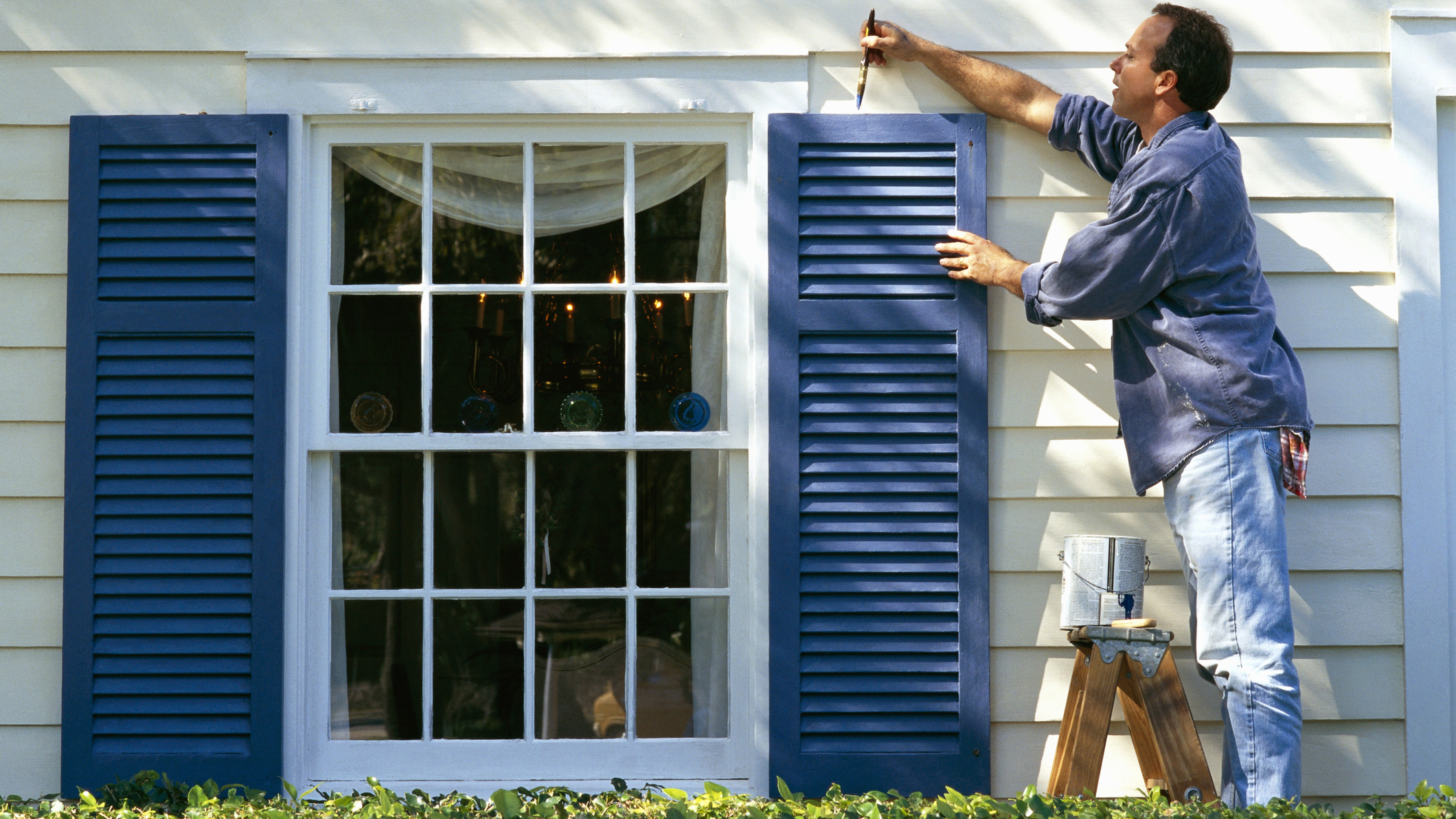How to save money for a house
Saving money for a house is tough, but getting on the property ladder is still within reach for most people. Here's our expert-led guide.

Are you dreaming of getting onto the property ladder? Then first things first. Before you start hunting down the best mortgage lenders, you need to save up for that all-important down payment – which, admittedly, isn’t always easy, particularly in the current climate. Then there are the other aspects you’ll need to consider, from sourcing the right mortgage to understanding the housing market. It can all feel a bit overwhelming to the uninitiated.
There are small steps you can take to start building your savings pot and boosting your knowledge, so here, we take a look at how to save money for a house and prepare for taking that first step on the ladder. All of this will help you on your journey to homeownership.
How much should I save for a down payment?
Your first step is knowing what your end goal is – i.e., how much you're going to need to set aside to afford the house of your dreams. You'll need a sufficient down payment to ensure you're getting the lowest mortgage rates. This means looking at the current market to get a ballpark figure of house prices in your area, and from there, working out how much you'll need to save.
Ideally, you want to aim for a minimum of 20% of the purchase price. “A 20% down payment will get you the most favorable mortgage rates and eliminate the need to pay for private mortgage insurance (PMI),” explains David Weliver, Founder at Money Under 30. “You can buy a home with as little as 3.5% down, but you’ll be paying much more in interest overall.”

A 20% down payment may seem like a stretch, but it will make homeownership more affordable in the long run, particularly when you consider PMI. PMI is a type of insurance designed to protect the lender if the borrower cannot keep up with the payments. It's a requirement for mortgages where you put less than 20% down. Dr. David Tuyo II, President and CEO of University Credit Union, explains that PMI is calculated as a percentage of the mortgage payments, on average 0.5% to 1.5%, depending on several factors like your credit score, credit history, and the amount of the down payment.
“Essentially, private mortgage insurance is an additional cost that may increase your monthly payments,” Dr. Tuyo said, so this will always need factoring into any calculation. And, when you consider the higher interest rates that are inevitable with a smaller down payment, it’s easy to see how costs can escalate. So, if your budget would struggle under the weight of these extra costs, spending longer saving for a larger down payment at the outset may make more sense.
“Realistically, if it’s possible, the higher the down payment or savings prior to purchase, the better,” adds Dr. Tuyo. “Generally speaking, if someone can save between 20-30% of the cost of their new home, then they would be approaching the purchase with a healthy financial outlook and be well-prepared to take on the responsibility of homeownership.”
Sign up to receive the latest news, reviews, buying guides and deals direct to your inbox
Don’t forget about the other costs that come into play, too. “Remember that unlike renting, there are quite a few variable expenses of homeownership,” says Matt Frankel, CFP, contributing mortgage analyst at The Ascent by The Motley Fool. “Property taxes, homeowners insurance, HOA dues, and maintenance are just a few examples. Be sure to take these into account when setting a reasonable budget.”
Such costs can quickly eat into your house budget, and that's before you even get to things like inspections and the cost of truck rental services for the move itself. Don’t forget to factor these into your initial calculations and add them to your down payment savings to get a more accurate ballpark figure of the total amount you need to save. Being thorough in your research and budget will ensure there won't be any surprise expenses down the line.

What if I can’t save that much?
Of course, it isn’t always easy to get started, and in many instances, such a significant down payment will be an impossibility. “With home prices skyrocketing over the past year or so, it can seem very difficult to build up enough savings for a down payment,” says Frankel. “Two smart things you can do are finding out the low-down-payment options you can take advantage of, and researching any down payment assistance programs available in your local area.”
This kind of support can be invaluable, so it’s worth spending time to see what’s out there. The US Department of Housing and Urban Development (HUD) offers several first-time buyer support programs and federal-backed loans. Most lenders have down payment assistance programs in place, too, operating on a state and local level. Taking advantage of such programs could mean you could reach your goal of homeownership far sooner than expected.
There's no need to panic if you learn that you're not eligible for this kind of support and find that you can't put away a 20% down payment. You should still be able to find a mortgage and buy your ideal first home. But be prepared for the monthly costs to be higher when going this route.

Consider the housing market
It's important to bear in mind the impact that the economic landscape can have on your savings ambitions, too, because the housing market changes rapidly. As Frankel pointed out above, skyrocketing house prices mean that even though you know how much you'll need to save to afford a house, this figure can change in line with broader market fluctuations and the economy as a whole. Staying on top of market changes in your area will help you avoid such shocks.
All this can prove tricky for those relocating to an unfamiliar area. Yet, it also offers unexpected opportunities. The coronavirus pandemic has made remote work increasingly common, leading to many workers looking to move to capitalize on their newfound flexibility. Relocating to a more affordable neighborhood without needing to worry about commuting has never been easier.
You'll also want to weigh the differences between buying and renting. "The fact is that renting can be much cheaper than homeownership, particularly in very expensive cities and popular areas," says Dr. Tuyo. "As a homeowner, there are additional costs to consider that renters do not need to contend with in their monthly payments. Ultimately, these additional costs should be accounted for when comparing renting options against buying opportunities … However, it's a more complicated calculation if you consider the potential return on investment through equity and the increase in value of a home over the years."
Dr. Tuyo adds that once you pass a certain point, the cost of homeownership outweighs those of renting. “Generally speaking, owning a home starts to be less expensive than renting after living in the same home for at least five years,” he says, so even if the initial outlay is a stretch, it could pay off in the long run.

Fix your credit score
Spending time fixing your credit score, particularly if you’ve missed payments or had difficulty securing credit in the past, should be high on the list of priorities for anyone saving for their first home. A better credit score equals a lower mortgage rate and, as a result, lower payments for the life of the loan.
This is because your credit score is a vital part of lenders’ eligibility criteria. If it isn’t up to scratch, you’ll be facing higher interest rates and repayment plans, and you could even be unable to secure a loan. “An individual’s credit score is used to determine the risk of providing them with a loan,” explains Dr. Tuyo. “Lenders use this to determine how likely it is for you to repay your loan once received and your general financial practices or habits in how you manage debt. Essentially, people with a higher credit score will be seen more favorably and they will be more likely to receive better loan offers with lower interest rates.”
Credit scores aren’t the only element lenders consider, added Dr. Tuyo, but it’s essential to be aware of your score and how it might affect your ability to get a mortgage. As a ballpark figure, if you’re looking for a conventional mortgage loan, you’ll likely need a credit score of at least 620 to be approved by a lender. If yours falls short, it’s time to get busy.
Seeking out credit repair services may be the quickest way to improve your financial health. Many of the best services guarantee to improve your score. They'll rifle through your credit report, spot areas that need attention, and highlight potential errors. They'll even work with credit bureaus to rectify lingering issues, which will help boost your score. Of course, it's possible to fix your credit score yourself. It'll take a bit more work on your part but costs nothing but time.

Figure out which mortgage you can afford
Even if you have your financial goals in order, your credit score has rebounded, and you have an eye on the local housing market, it's important to step back and remember that you need a mortgage you can actually afford. Doing this before you get the ball rolling with mortgage lenders gives you the added security of knowing you won't get in over your head.
“Before purchasing a home, it’s important to work with your lender to see how much buying power you can qualify for based on your debt-to-income ratio and credit,” says Ajani Scott, reality star and real estate agent of Agents of LA. Your debt-to-income (DTI) ratio is key. DTI is a measure of your income against your debt and can indicate how well you’re managing your current credit commitments. A higher score means you could already be struggling and may not be able to afford a mortgage on top of your other obligations.
You'll need to take a thorough review of your finances so you can see the big picture realistically. Personal finance software can help. It'll give you a general overview of your financial stability and, if it links with your current bank accounts, offer an easy way to keep on top of your budget. Remember to think long-term. Saving for a down payment is only half the battle. You also need to be confident you can make mortgage payments on time, keep up with repairs around your new place, and have an emergency fund at the ready. Buying a new home should not cause you to overstretch yourself or strain your finances.
Dr. Tuyo encourages you to keep things realistic. “Search for a house you can comfortably afford. Your total housing payment should be under 30% of your gross monthly income.” Buying a house you can afford keeps your DTI ratio in check. Remember, lenders use that score to determine your eligibility for credit. Keeping payments under the 30% mark also takes less of a toll on your budget.
“One important point for new homeowners to keep in mind is that banks will typically approve you for more than you should realistically spend,” adds Frankel. “Most lenders will approve buyers with a DTI ratio as high as 45%, based on pre-tax income. But what your lender will approve you for and what you can comfortably pay each month are two different things.” And that is why sticking to the 30% rule is critical.

Source the best mortgage rates
Dr. Tuyo believes your best chance to get approved for a mortgage is to ready yourself with the following: adequate savings for a down payment, closing costs, and cash reserves; a qualifying credit score; proof of consistent, reliable income for at least two years; and a reasonable debt-to-income ratio. Once you have everything in order, it’s time to find a low-interest mortgage.
Don't be swayed into accepting the first mortgage offered. "One of the biggest rookie mistakes homebuyers make is applying for a mortgage with one lender and simply accepting whatever loan terms they offer," explains Dr. Tuyo. Just as you comparison shop for daily essentials, you should do the same with lenders.
"For one thing, different lenders will offer different mortgage rates to the same borrower," says Dr. Tuyo. "And you might be shocked at how much a seemingly small difference can save you. For example, on a $300,000 30-year mortgage, the difference between interest rates of 3.125% and 3.25% is more than $7,500 over the life of the loan."
Using a website such as Mortgages.net is a simple way to look at all the choices available to you. Slow down your thinking and tame your excitement, too. Rushing into making a decision is never a good idea. Finding the right mortgage for you makes a big difference in your long-term financial health.
“It’s also important to research the eligibility requirements of the lender, the state, and the type of property you wish to buy as there can be differences that you should be aware of,” adds Dr. Tuyo. “Finally, after you are confident with your research and lender that best suits your needs, it is usually best if you can find preapproval on a loan before you actually start shopping for a new home.”

Choose your property wisely
Once you’ve saved your down payment and know where you stand with a mortgage lender, you can start searching for your ideal property. It may take a long time to get to this stage, but doing things the right way will not only yield the home of your dreams but improve your financial outlook.
“Make sure it’s a place you’d like to call home for an extended period of time,” said Dr. Tuyo. “Buy [it] because you want a place to call your own, not as an investment. Don’t stretch yourself too thin thinking you can do something with the equity, or flip it for a quick profit.”
Ajani Scott encourages you to take your time and never feel pressured into buying prematurely. “A rushed decision can lead to resentment, poor choices, and ultimately unhappiness,” she said. “When you are finally ready to purchase, be sure to have long-term and future goals in mind, such as family planning so that you can grow into the home and the rising value of homes in the area so that you may get the best return.”

Reduce your debt
It may seem counterintuitive to pay down your debt when you’re trying to save for a house but bear with me. By reducing your debt load, you’ll lower the amount of money spent on credit and car payments each month, allowing you to put more into your house fund instead. It’ll help your DTI ratio as well. A lower DTI means you’re more likely to be offered a lower mortgage rate, which means paying down your debt will pay off in the long run, too.
Start by considering which debt to pay off first. Dr. Tuyo recommends paying off debts with the highest interest rates immediately. And if you have several loans or credit cards, consider consolidating all of them into a single loan to streamline your repayment schedule and lower the interest rate. Find the best debt consolidation companies to see if that's a workable option. If consolidation isn't for you, you may want to see if you could refinance your car or personal loan instead.
Lastly, make sure that you're managing your credit effectively. This helps whip your credit report into shape. You'll want to begin this process early. As Dr. Tuyo explains: "One year out, avoid negative marks on your credit report like late payments or applying for new credit. Big purchases like a car should be made a year before buying a home, and definitely within six months." Applying for any form of credit while house shopping can result in a hit to your credit score, so be sure to avoid large purchases if buying a home is on your near-term agenda.

Make a savings plan
It’s always a good idea to actively look for ways to build your savings, and the best place to start is with a savings plan. How you go about this will depend on your timeframe to purchase a house.
Let's say that typical homes within your price range are $250,000. If you want to put 20% down, you have to save $50,000. And if your goal is to buy your home within five years, you'll need to put away $833 per month. And that's just for the mortgage. We haven't factored in insurance or any of the other costs with buying a home. If this seems like too much, you have to adjust your expectations. You'll either need to spend more time saving, opt for a cheaper property, or concede to putting less down at closing.
To guarantee you have enough to live comfortably, you must be realistic about your budget. Set a plan and stick to it, says Dr. Tuyo. “Life can manifest additional costs without warning, but the important thing is to keep making progress towards your goals despite any obstacles along the way.”
Cut your expenses
Once you've cleared out your debt, you'll have extra monthly income to put straight into your savings pot. The next thing on your agenda is to see where you can cut back on your current expenses so you can grow your savings at a faster clip.
One key area all experts agree on is the culling of expenses. You will reach your financial goals sooner by breaking the habit of overspending, especially on things that aren't needed.
Start by looking at your subscriptions to see if any can be cut, and be honest with yourself. When was the last time you went to the gym? Do you really need every streaming service on the market? Are those magazine subscriptions worth it? Try to limit your luxuries, save money on your groceries, downgrade phone plans, and when it's time to renew your various insurances, always shop around to find a cheaper rate.
You could even take this expense-cutting one step further by reducing your current housing costs, either by looking for somewhere cheaper to rent, moving in with friends for a few months to kick-start things, or getting a flatmate to split the rent. “Do not hesitate to move back in with parents if it’s an option,” says Scott. “Although probably not ideal for most, it can help you reach financial goals much more quickly.”

Get hustling
Along with cutting back expenses, Dr. Tuyo recommends seeking ways to earn additional income. Do you have a hobby that could potentially make money? Do you have enough time for a side job? Whether you want to start selling your wares on Etsy or get set up as a virtual assistant, it could pay off. A survey found that men earned an average of $8,948 per year from their side hustle, while women earned $6,085.
Even easier, sell the belongings you no longer need. You'll make money and will have less to pack and move. A recent survey shows that Americans have netted an average of $1,810 by selling household items online this past year, so it could prove lucrative.
Save smart
Once you get into the swing of things and know how much you can realistically save, make sure to stick to your plan. Dr. Tuyo suggests you "automate your savings and allocate a certain percentage or dollar amount into a savings or money market account every month." Making this simple change guarantees you'll add to your housing fund with every paycheck. You'll likely stash away far more than if you waited until the end of the month to see what's left over.
You could even step it up a notch by saving as if you were already in your new home. If your future housing costs are likely to be higher than your current rental outgoings, put the difference straight into savings. Not only will you be saving more for your home, but you'll be getting used to the extra expenditure that can come with it.
If you can add anything extra at any point from overtime work or holiday pay, funnel it straight into savings. You should also bank windfall gains like gifts, bonuses, commissions, and the sale of personal assets, says Dr. Tuyo. And if you get a pay raise, put the extra straight into your savings account. You won't notice it if it's not there. And don't forget about your tax refund either! Firing up your tax software and working out what tax deductions you're entitled to can maximize your refund and grow your savings.
Once you're closer to realizing your goal, it's imperative to change tactics again to maximize your every dollar. "Six months out, you should go into 'cash preservation mode' so you'll be able to afford your down payment yet still have some money left over for additional unexpected expenses that will come with homeownership," said Dr. Tuyo. And don't forget to have an emergency fund throughout the process, giving you accessible cash to fall back on in a pinch.

Find the best savings rates
So, where do you save all this money to get the best returns? For this, you'll need to do some research, and the first place to scout out your options is online. When you find the right bank and couple that with the magic of compounding interest, you’ll reach your goal in record time.
Online banks have traditionally had the best savings rates. Thanks to their low overheads, they're able to pass on savings to their customers. Opting for an online-only savings account will also prevent the temptation of spending the money on other things.
Be on the lookout for banks that offer the ability to siphon off any spare change into a linked savings account – many round-up debit card purchases to the nearest dollar and put the difference into savings. And speaking of debit cards, if you’re able to earn cash back on your spending, consider putting it straight into your savings rather than keeping it in your checking account. The same applies when it comes to cash back credit cards. Every little bit helps.
Summary
The path to homeownership isn't always easy, but it is always worth the effort. There's nothing quite like getting the keys to your very own slice of real estate! Scrimping and saving can seem like a never ending battle, but there are plenty of small changes you can make that will have a big impact on your goals. The sooner you start, the sooner you'll be able to realize your dreams of homeownership.
Leanne has been writing professionally for well over a decade, with the majority of that time spent at a financial publishing company where she wrote countless articles across the personal finance space. Now freelancing, she still predominantly writes about finance, with bylines in both national and trade publications. In her spare time Leanne likes to read, catch up on Netflix and sleep, though her toddler rarely allows such things.

